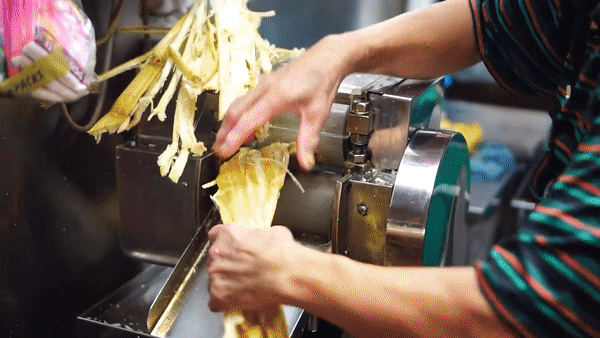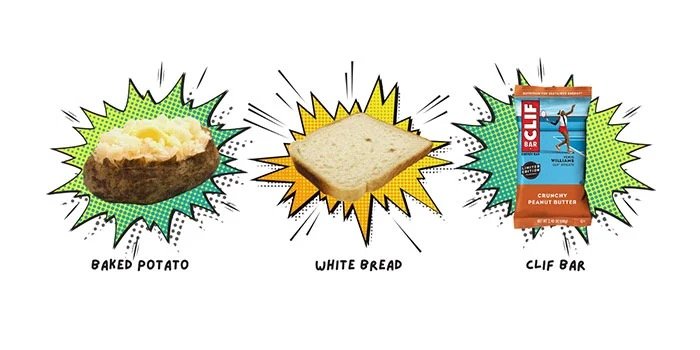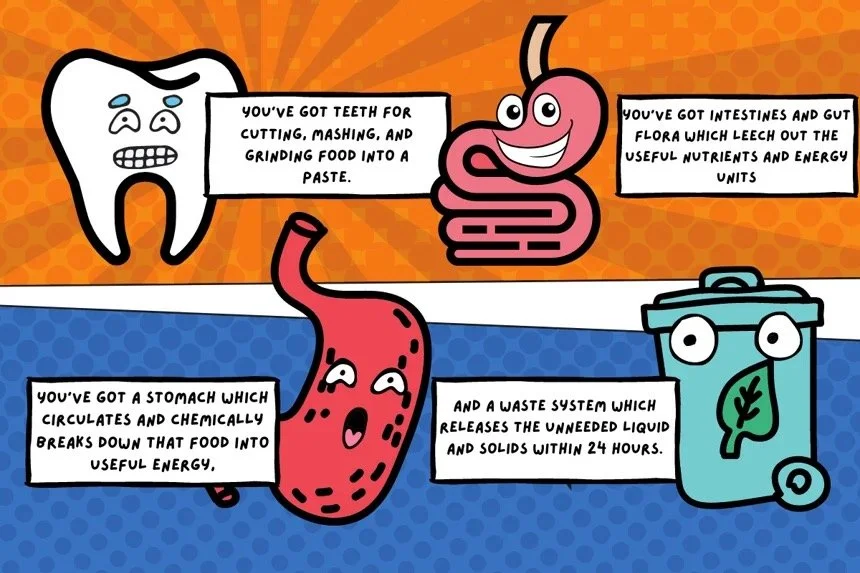Good Carbs vs. Bad Carbs
There was an old Saturday Night Live sketch where Tom Hanks played a character named “Mr. Short Term Memory Man.” In one sketch he visits a friend in the hospital, and every few minutes his memory resets, and he says something like, “Bill, what are you still doing in bed? It’s almost noon! Huh, you broke your leg!? We’ve got to get you to a hospital!”
In another sketch Mr. Short Term Memory man is on a date at a fancy restaurant.
Tom Hanks as Short Term Memory Man
At a certain point he takes a bite, and as he chews his face slowly turns to shock and he spits it out on the table. “Oh my god! This restaurant is serving already-chewed food!”
The idea of already-chewed food is a useful concept when you’re trying to understand how carbs work, which carbs are helpful, and which ones you should limit in your diet.
Have you ever chewed on a stalk of raw sugar cane? It’s an everyday snack in Latin America and Southeast Asia. You just grab a piece, peel the bark, and start chewing on the fibrous inner section of the stalk.
100 grams of sugar cane stalk is about 40 calories, all of them coming from, of course, sugar. It’s as pure a carb as you can find in agriculture.
Compare that to table sugar, which comes from that same sugar cane. 100 grams of granulated sugar will be about 390 calories.
What accounts for the nearly ten-fold increase in caloric density between sugar cane and granulated sugar? When you eat table sugar, you’re eating already chewed food!
The chewer in this case is a machine like this, a sugar cane press.
A mom-and-pop version of the huge industrial units of the sugar industry.
The sugar cane is passed between the rollers several times, each pass extracting more of the sugar cane juice, which is collected from a spout on the bottom. But we’re not done “chewing” yet!
From there, the sugar cane juice is put into a clarifying system, where it’s heated, treated, and filtered through multiple stages. At each step the sugar removes fiber, enzymes, and other “contaminants.” It’s then sent to large evaporators which concentrate it further, until the final stage where the sugar is allowed to form into crystals and packaged for sale. At each step the sugar’s color goes from a brackish brown to clear.
When you buy brown sugar, you’re only missing the final step of clarification. Brown sugar is no more “raw” or healthier than white sugar.
At each step the sugar is chewed up, through both physical and chemical means, into finer and finer molecular structures. This is how 40 Calories can become 390.
This same tale could be told for all of our sugar sources. Fructose is the sugar of chewed up fruit. Corn syrup is the chewed up sugar of corn. Honey is the chewed up and regurgitated nectar of flowers, using bees instead of machinery (although there’s still plenty of machinery involved in the honey clarification stage).
If you wanted to eat 400 calories of sugar you’d need to munch through 10 stalks of fresh sugar cane, a laborious process that would take the better part of an hour. Or you could get there with one small milkshake, sucking the sugar down through a straw while you mindlessly browse your phone!
How do you feel about the idea of eating already-chewed food? Unless you’re a baby bird, it’s not a very pleasant thought is it? When you’re making your daily choices about what to eat, aim for foods which haven’t been chewed too much before they reach your plate.
This applies to all kinds of foods beyond sweeteners. Let’s consider these three items:
Per 100 grams, how many carbs and Calories do these foods contain?
People think potatoes are a “high-carb” food (which they are, but only in comparison to other vegetables). You could even argue that baking the potato is a kind of chewing, but compared to the amount of milling, refining, and chemistry that goes into bread, the potato is hardly touched.
In the same way, bread is considered by some a big bad food when you’re slimming down, but compared to something like a “healthy” sports bar, it’s only slightly chewed. Nothing can match the amount of processing that goes into a high-tech food like a Clif Bar. A modern factory made food combines the highly chewed products from dozens of sources; sugars, nuts, grains, cacao, with a lot of detailed work to increase palatability and mouth-feel.
This is why when you eat a whole baked potato you’re absolutely stuffed, while you can consume triple the caloric load with a sports bar and think of it as a quick snack. Eat more things like potatoes, and less things like energy bars!
Inside your body you’ve got a world-class food refinement factory...
There’s no need to have anyone else chew your food for you. The more processing that happens inside your body and not a factory, the more full and satisfied you feel, even as your body stays trim and healthy for the long term!









